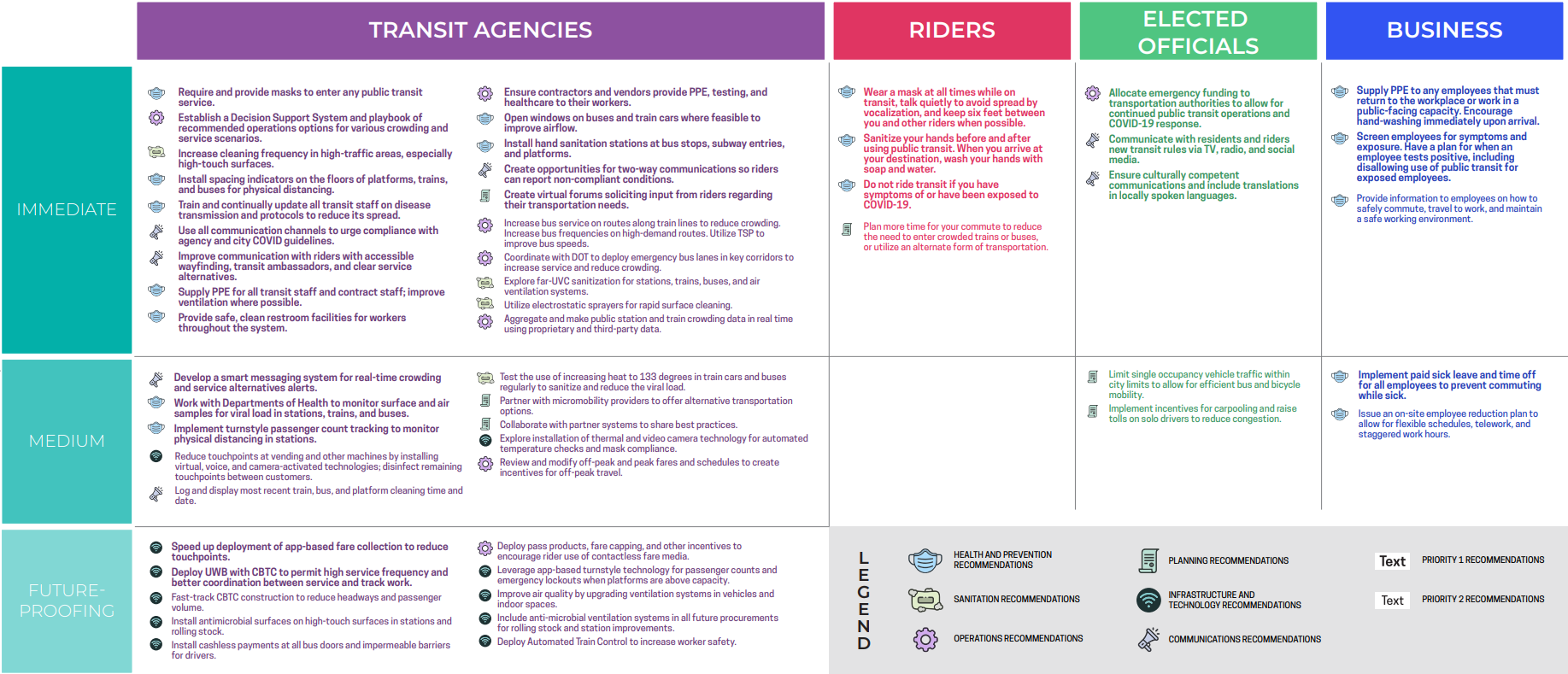TriState Transportation Campaign Back on Board Report, 2020
5 minutes Date Launched: Mar 1, 2020 Dates given are approximate.
Summary
The Tri-State Transportation Campaign created a guide to safe transit in the era of COVID-19. In March and April, the height of the COVID-19 pandemic, cities across the country saw a dramatic decrease in public transit ridership due to stay at home orders and speculation that public transit was not safe, an opportunity to create a spike in infection rates. However, through research and a rider survey, this study found that there is no definitive evidence that shows transit is a cause of COVID-19 outbreaks as there are countries that have continued with high public transit use and low COVID-19 cases. Rather, the study argues that the larger issue contributing to the spread of coronavirus is the lack of support offered to our poorest community members who are also often our essential workers.
To better understand the public’s perception of public transit during the pandemic, the paper surveyed about 1,000 regular transit users, 108 still actively using transit during the pandemic and 92% of the respondents indicated that they would return to public transit if safety measures were implemented and enforced. In general, the paper discusses the two most critical interventions based on the science about COVID-19 being masks and ventilation. With this in mind, the study offers a set of recommendations for transit agencies, riders, elected officials, and businesses to follow to help ensure the safety of its riders, our essential workers still taking public transportation and the returning workforce. The recommendations are categorized by Health & Prevention, Sanitation, Operations, Partnerships & Planning, Infrastructure & Technology, and Communications and the timeline in which they recommend incorporating them including Immediate, Medium Term, and Future-Proofing. The study then points to several international examples, London, Singapore, Vienna, Toyko and Paris, that have seen public transit usage increase yet COVID-19 rates have not spiked to understand their models and best practices. The paper recognizes the value of a tailored approach for each community but hopes this report helps dissect the process of safely using public transit that is essential to our communities while the COVID-19 pandemic is still looming and the financial and operational support required.
To read the full report, please click here.
